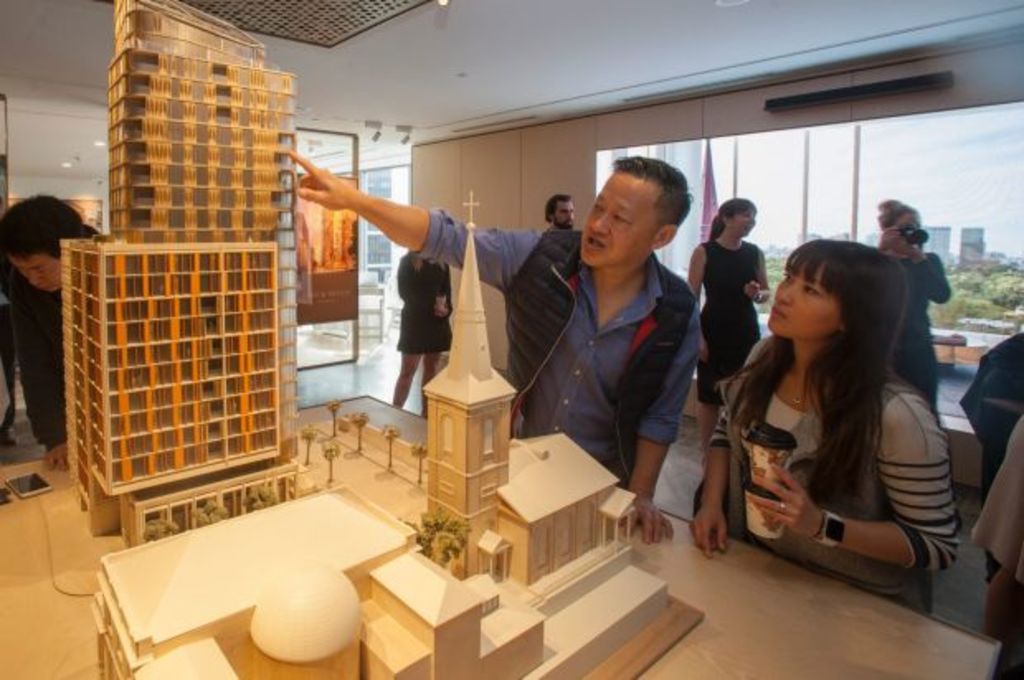How to minimise the risks of off-the-plan apartments and get the best price

Purchasing an apartment off-the-plan can be an attractive prospect. Buyers get a new apartment, and there are grants for first home buyers and tax advantages for investors that provide an added incentive.
But there is a significant degree of risk involved. You are buying something that does not exist yet, and there is no possibility of seeing the finished product before purchase.
With talk of an oversupply of apartments leading to price drops, buyers need to be especially careful when purchasing off-the-plan to mitigate the risks involved.
How buying off-the-plan works
Buying off-the-plan means purchasing an apartment or house that hasn’t been built yet, and is either in the planning or construction stage.
A 10 per cent deposit is usually required when the contract is signed, and the balance is payable at settlement, which occurs when the apartment is complete.
The time between the launch of a development and completion can be several years. This can be advantageous for some buyers as it allows additional time to save extra money to contribute to the purchase, but it can also tie up the deposit for a number of years.
Research reduces risk
The most important thing to research is the track record of the developer, according to general manager of McGrath Projects Adam Sparkes.
“If they have significant experience and have rolled out a number of projects, use their last completed building as a case study,” he says.
Head conveyancer at CM Lawyers Alex Sapounas says buyers should physically inspect the developer’s previous buildings.
“Have a chat to some of the owners,” he says. “Ask about their experience with the developer. Did they meet their timelines? Were there issues with the quality of the work?”
It’s also worth investigating the developer’s financial position. “It’s important to understand if the developer has the funding in place to undertake the construction,” Mr Sparkes says. “They’re going to need a specific number of what the banks term qualifying pre-sales [to secure finance].”
Larger developers often manage construction, while smaller companies usually employ a builder. “The developer might be the landowner, and they will then engage a builder to do the construction,” Mr Sparkes says. “Do the same research on the construction company.”
- Related: What not to do when building your dream home
- Related: Why investors can’t do without a gym nobody will use
- Related: The five most common property investment mistakes
Buyers should engage a solicitor or conveyancer with experience in off-the-plan purchases to investigate the contract. The contract may contain a sunset clause, which allows either the developer or buyer to cancel the contract if the building isn’t completed within a certain time frame.
In cases of “sunset clawback”, buyers have had contracts terminated or have been asked to stump up tens of thousands of dollars to keep the property, although recent changes to the rules in NSW offer buyers more protection.
Contracts often allow for a 5 per cent or 10 per cent variance in size, and developers frequently measure apartments from the outside, including 50 per cent of shared walls and 100 per cent of internal walls, meaning the usable space may be smaller than advertised. In rare cases, apartments marketed as one-bedrooms have turned out to be studios.
Even with pre-approval, buyers need to prepare for lending criteria tightening between purchase and settlement, or even their lender’s valuation at completion being lower than the purchase price, as they will need to make up the shortfall or risk forfeiting the deposit.
Which apartments are most desirable?
A concentration of new apartments in one area can lead to downward pressure on prices if buyers have a larger number of properties to choose from, but apartments with unique features may have stronger growth prospects.
“Lower rise buildings with a point of difference, whether it’s the architecture or a river location, are still sought after,” says Mr Sparkes, adding that landscaping also plays a significant role in how a building is perceived.
Richard Baini, director of Richard Matthews Real Estate, agrees. “Small developments are always more popular. There’s a perception that you feel more secure as you know your neighbours.”
Mr Sparkes says getting in early in a development’s selling campaign gives buyers the best pick of the units available. “There’s going to be some apartments that may have a view or a certain aspect,” he says. “They can often be some of the most desirable ones.”
How to get the best price
To find out if an apartment is good value, research past sales and other new developments. “Look for comparable properties that are a year or two old,” says Mr Sapounas, adding that developers often factor future values into the purchase price. “There’ll always be a premium for a new product.”
Even though off-the-plan apartments have a set price, vendors may still be open to negotiation, especially early in the selling period. “The banks might want to see 20 pre-sales, which often means those 20 are sold at very reasonable prices,” Mr Baini says.
Mr Sparkes said early buyers would be well-placed to take advantage of capital growth if the value of the apartment rose by the time the building was completed. “There is a benefit in getting in early, and that is you’re buying at the first release price point.”
If the developer won’t budge on the price, it’s worth asking for higher quality finishes or added extras like timber floors instead of carpet. “The best time in terms of negotiation is before they start construction,” Baini says. “They’re looking to sign contracts to get the building off the ground.”
First home buyers can also take advantage of government grants, in some circumstances up to $20,000, to contribute to the purchase of the property.
We recommend
We thought you might like
States
Capital Cities
Capital Cities - Rentals
Popular Areas
Allhomes
More







